NOTE: Limnophila sessiliflora is on the US Federal List of Noxious Weeds. According to an explanation from the USDA that I found in the APC forum, “It is illegal to sell or move across state lines, and may be illegal to move or possess within the state, depending on state laws and enforcement authority.”
-----------------------------
Limnophila sessiliflora
AKA Dwarf Ambulia, Asian Marshweed
Placement: Background
Growth: Exceptionally fast
Stem length: 12 feet
Substrate: Sand, gravel, mud
Lighting: Any
Fertilizer: Iron
DESCRIPTION
This amphibious herbaceous perennial — one of 13 limnophila species found in the Old World — is native to India, Ceylon and the Philippines. It has been introduced in many areas around the world and grows easily in a variety of conditions, including rice paddies across Asia, mountain streams in Africa, and waterways of Florida and Texas.
In its submersed form, most familiar to aquarists, limnophila sessiliflora has bright green whorls of 6-10 finely divided, feathery leaves surrounding the stem. When allowed to grow above the surface, emersed stems are hairy and have whorls of 5-8 leaves that are dark green and roughly lance-shaped. Emersed stems can also produce small flowers that are typically blue, violet, pink or lavender.
While aquarists may find it desirable, L. sessiliflora is essentially an aquatic weed. Reproducing easily from stem fragments or seeds, it establishes itself very quickly in the low-light conditions at the bottoms of lakes and rivers, will grow to a height of 12 feet to reach the surface, and forms dense stands that block light from plants below. These characteristics can enable it to out-compete native plants.
IN AQUARIA
Limnophila sessiliflora is known for growing well in low-light set-ups with 2wpg or even less. The tops of the stems may develop reddish coloration with higher lighting and micronutrient supplementation. The optimal temperature range is 68-79 deg. F (20-26 deg. C), but the plant can handle temps as low as 59 deg. F (15 deg. C ) or as high as 83 deg. F (28 deg. C). It does requires iron for good growth, and low potassium levels reportedly can cause has been reported to cause melt.
While it may be one of the easiest to grow, this is not the toughest of aquarium plants. The submersed form is soft and fragile and may be damaged by larger fish and/or clumsy aquarists. I don’t know if herbivores will consider it salad or not. (For what it’s worth, the Chinese grass carp, used in Florida to control invasive plants, won’t touch the stuff.)
This plant may be well suited for use in cycling tanks thanks to its rampant growth, but hobbyists should be aware that one stem can speedily turn into many, and runners will send up volunteer sprouts all over a tank. Left unchecked, L. sessiliflora could certainly take over even a monster-size aquarium. Keep that pruning tool handy!
-----------------------------
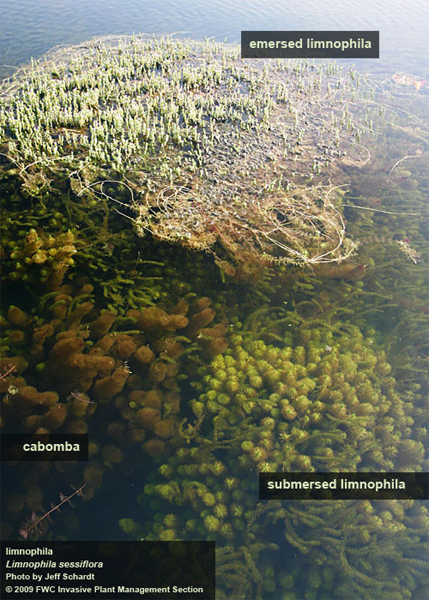
differentiated forms (University of Florida photo)
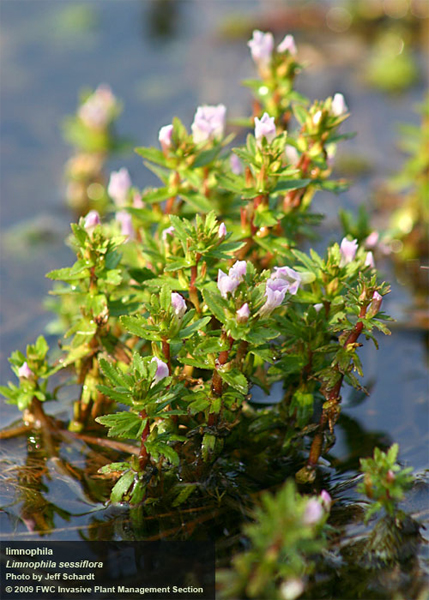
emersed form (University of Florida photo)
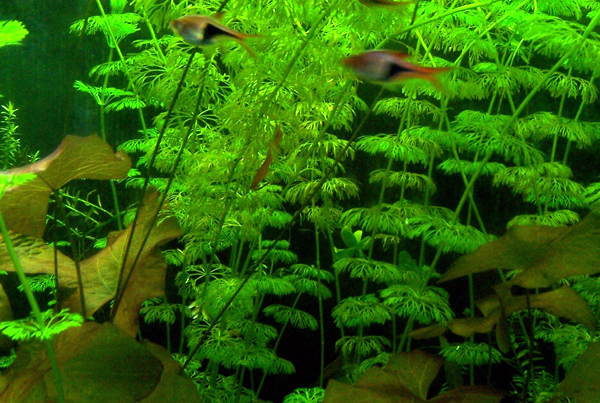
submersed form
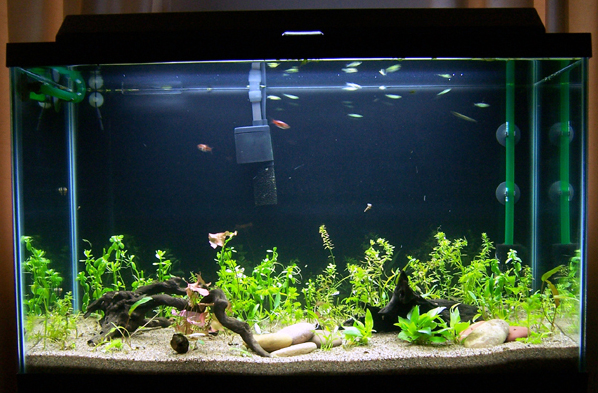
Just-planted 29g: PFS substrate, osmocote root tabs, lighting under 1.25wpg
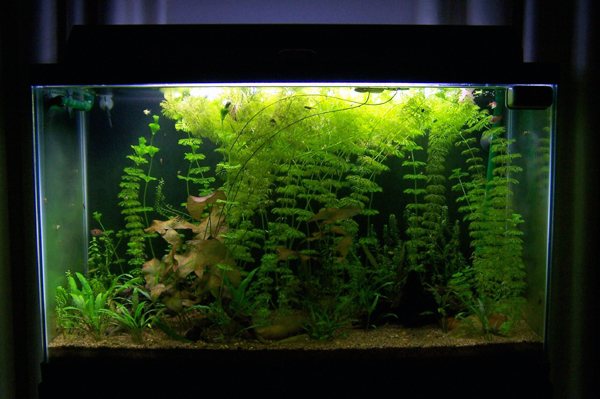
Same tank, three months later
SOURCES
http://www.plantedtank.net/forums/myplants/72-Asian_Ambulia_Limnophila_sessiliflora.html
http://www.aquaticplantcentral.com/forumapc/plantfinder/details.php?id=36
http://plants.ifas.ufl.edu/node/234
http://www.aquaticplantcentral.com/...sions/27980-us-federal-noxious-weed-list.html





-----------------------------
Limnophila sessiliflora
AKA Dwarf Ambulia, Asian Marshweed
Placement: Background
Growth: Exceptionally fast
Stem length: 12 feet
Substrate: Sand, gravel, mud
Lighting: Any
Fertilizer: Iron
DESCRIPTION
This amphibious herbaceous perennial — one of 13 limnophila species found in the Old World — is native to India, Ceylon and the Philippines. It has been introduced in many areas around the world and grows easily in a variety of conditions, including rice paddies across Asia, mountain streams in Africa, and waterways of Florida and Texas.
In its submersed form, most familiar to aquarists, limnophila sessiliflora has bright green whorls of 6-10 finely divided, feathery leaves surrounding the stem. When allowed to grow above the surface, emersed stems are hairy and have whorls of 5-8 leaves that are dark green and roughly lance-shaped. Emersed stems can also produce small flowers that are typically blue, violet, pink or lavender.
While aquarists may find it desirable, L. sessiliflora is essentially an aquatic weed. Reproducing easily from stem fragments or seeds, it establishes itself very quickly in the low-light conditions at the bottoms of lakes and rivers, will grow to a height of 12 feet to reach the surface, and forms dense stands that block light from plants below. These characteristics can enable it to out-compete native plants.
IN AQUARIA
Limnophila sessiliflora is known for growing well in low-light set-ups with 2wpg or even less. The tops of the stems may develop reddish coloration with higher lighting and micronutrient supplementation. The optimal temperature range is 68-79 deg. F (20-26 deg. C), but the plant can handle temps as low as 59 deg. F (15 deg. C ) or as high as 83 deg. F (28 deg. C). It does requires iron for good growth, and low potassium levels reportedly can cause has been reported to cause melt.
While it may be one of the easiest to grow, this is not the toughest of aquarium plants. The submersed form is soft and fragile and may be damaged by larger fish and/or clumsy aquarists. I don’t know if herbivores will consider it salad or not. (For what it’s worth, the Chinese grass carp, used in Florida to control invasive plants, won’t touch the stuff.)
This plant may be well suited for use in cycling tanks thanks to its rampant growth, but hobbyists should be aware that one stem can speedily turn into many, and runners will send up volunteer sprouts all over a tank. Left unchecked, L. sessiliflora could certainly take over even a monster-size aquarium. Keep that pruning tool handy!
-----------------------------

differentiated forms (University of Florida photo)

emersed form (University of Florida photo)

submersed form

Just-planted 29g: PFS substrate, osmocote root tabs, lighting under 1.25wpg

Same tank, three months later
SOURCES
http://www.plantedtank.net/forums/myplants/72-Asian_Ambulia_Limnophila_sessiliflora.html
http://www.aquaticplantcentral.com/forumapc/plantfinder/details.php?id=36
http://plants.ifas.ufl.edu/node/234
http://www.aquaticplantcentral.com/...sions/27980-us-federal-noxious-weed-list.html





Last edited:





